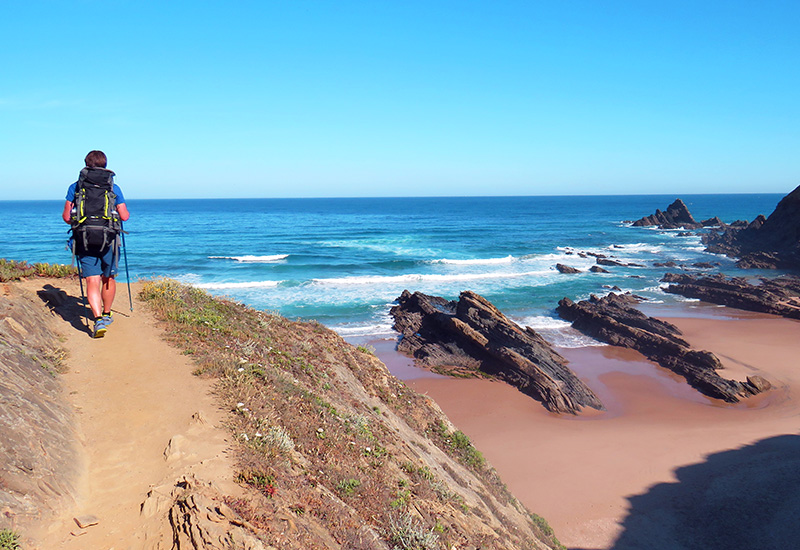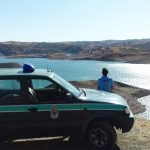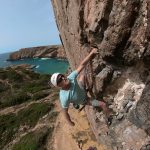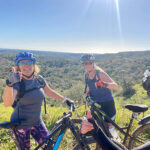Anyone familiar with the Algarvian landscape will understand why the region has become a real mecca for outdoor enthusiasts. One particular magnet is the popular Rota Vicentina, a network of 450 kilometres of footpaths and cycling trails extending from Sines in the Alentejo to Lagos.
The always-spectacular Rota Vicentina not only showcases the dramatic, coastal wilderness of the Parque Natural do Sudoeste Alentejano e Costa Vicentina, but encourages visitors to venture inland to explore the whitewashed villages and historic tracks just a few kilometres from the rugged cliffs.
There are two main trails: the inland Historical Way (Caminho Histórico) and the coastal Fishermen’s Trail (Trilho dos Pescadores). These are interspersed with 24 circular day walks ranging from 3.5km to 15km, many of which link the inland trail to the coast or vice versa. Both main trails see hikers arriving at the lighthouse of Cabo de São Vicente, the most southwesterly point of mainland Europe and part of the pilgrimage route of the devotees of Saint Vicente.

The beauty of the Rota Vicentina is the ease with which you can combine various stages of the Historical Way and the Fishermen’s Way with circular day walks. You can also hike the well-waymarked trails north to south or south to north, which means no hiker’s experience of the Rota Vicentina will be exactly the same.
Walking (or cycling) in this unspoilt part of Portugal is only half the experience. The Rota Vicentina Association – the non-profit organisation which manages, promotes and maintains the network of trails – is keen for visitors to experience the cultural heritage and local traditions while they are on the trail.
The Historical Way
This mostly inland route meanders from Santiago do Cacém to Cabo de São Vicente along 263km of rural trails and quiet roads. The landscape is one of rolling hills, valleys, rivers and cork tree forests, interspersed with whitewashed villages. Highlights include the Roman ruins of Mirobriga, the river beach and rock pools at Pego das Pias and the revitalised village of Pedralva. For those looking for the best natural experience, the wildflowers are at their peak in the spring.
There are 13 stages, ranging from 12km to 33km; all are described as ‘easy’ or ‘average’. The Rota Vicentina website describes the trail as ‘a true journey through time, local culture and nature trails’. It’s a good choice for anyone seeking tranquillity and an off-the-beat hiking holiday.

The Fishermen’s Trail
At 226.5km, the Fishermen’s Trail is the more popular and challenging of the two routes, not least because it rarely leaves the rugged coastline and involves a fair amount of walking along sandy trails. The scenery is almost always spectacular, with the crashing waves providing a constant soundtrack to each day’s walking. Another trail highlight is seeing the storks nesting on rock stacks.
Overall, there are 13 stages, ranging from 10km to 22.5km. The Rota Vicentina website describes the trail overall as ‘somewhat difficult’. We walked the route in May 2022 and found the toughest sections to be the one between Carrapateira and Vila do Bispo and the two between Sagres and Luz.
The trail officially begins at Praia de São Torpes, 10 km north of Sines; however, hikers frequently join it at Porto Covo, where there are more accommodation options. Many tour groups offer four-day guided tours from Porto Covo to Odeceixe, so during the hiking season (September to June), this section of the Fishermen’s Trail can become a little busy (book your accommodation ahead).

Note
The extended Fishermen’s Trail to Lagos is far tougher in technical terms than the earlier stages.
Cycling
It’s far too dangerous to cycle the cliff-edge paths of the Fishermen’s Trail; however, the Historical Way offers both road and mountain biking options. More information is available on the Rota Vicentina website.
Tips for walking the Rota Vicentina
To get the best out of your trip, the Rota Vicentina Association suggests you:
visit during the shoulder months and low season when there are fewer visitors and temperatures are lower. Split your time between the coast and inland route options for a more diverse experience consider using local services, e.g. guided tours choose local Rota Vicentina partner organisations, e.g. for accommodation and food buy sustainable products send your feedback and suggestions for improvement And my own tip? Take full advantage of the low-cost luggage carriers and walk with only a day pack.



Trekking Portugal’s Rota Vicentina: the Historical Way and Fishermen’s Trail by Gillian Price
The route outlined in Cicerone’s new edition of this pocket-sized guide begins with three days of walking on the Historical Way, starting at the rural Alentejan town of Santiago do Cacém with overnight stops at Moinhos do Paneiro and Cercal do Alentejo. From Porto Covo, the author stays with the Fishermen’s Trail to Odeceixe before opting to rejoin the Historical Trail to Vila do Bispo. Both routes are described for the final trek to the tourist honeypot of Cabo de São Vicente.
For those with less time – or who are combining the Rota Vicentina with other trips in Portugal – the author has combined some of these stages with four outlined inland routes to suggest:
- a nine-day loop from Cercal do Alentejo heading south along the coast as far as Odeceixe and back
- a one-week hike from Porto Covo to Carrapateira
- a four-day coastal walk from Porto Covo to Odeceixe
- As well as detailed walking instructions, the book includes all the information you’d expect from a good hiking guide, i.e. when to walk, what to take, GPX downloads, potential issues, e.g. “a dearth of shade”, transport links and accommodation ideas.
In her introduction, Gillian Price writes, “This beautiful route … is on the way to becoming popular with walkers” – if our experience in spring 2022 is anything to go by, I’d say it’s already there!













